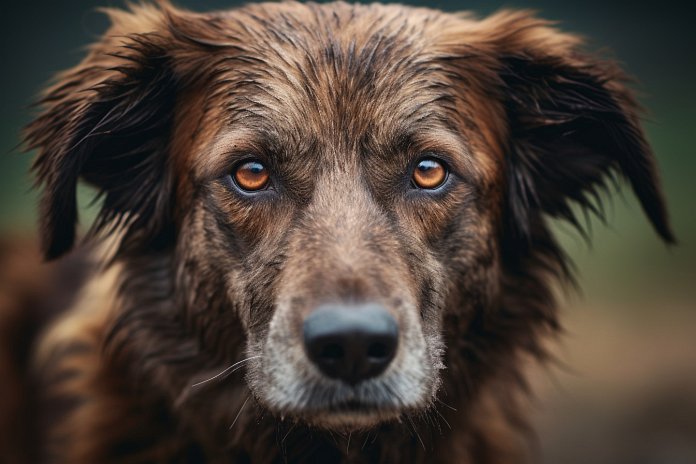
Dogs are often described as having six senses and unique abilities to respond to humans in different ways. They can sense our emotions and act accordingly, whether it’s getting excited when we’re happy or comforting us when we’re sad. But how do dogs know how to behave in different situations? Can they feel emotions like disgust?
Signs of a Dog Feeling Disgust
Dogs are capable of feeling emotions, although not in the same way humans do. They can feel basic emotions like joy and disgust. Dogs may feel disgusted when they are petted against their will or when they encounter threatening dogs. You can tell if your dog is disgusted by observing their body language and reactions. If they feel territorial or threatened, they may make eye contact, show their teeth, or become defensive. In such cases, it’s important to distract and redirect them away from the situation. Some dogs may also need personal space and may show their teeth, growl, or bark when being petted. A furrowed brow and intense stare indicate that your dog needs space.
Body Language
Some signs that your dog may be feeling disgust include growling, staring, barking, and exposing their teeth. Other signs may include an upright posture, furrowed brow, and raised hairs on their neck.
The History of Dog Emotions
The ability of dogs to respond to our emotions and display their own emotions is a result of thousands of years of evolution. The bond between humans and dogs started over 15,000 years ago when wolves and humans realized they could help each other. Over time, wolves that stayed closer to humans evolved differently and developed unique personality traits. Dogs have continued to evolve from their wolf ancestors, resulting in the diverse breeds we have today. Despite the variety of breeds, each dog has its own individual personality.
The Science of Dog Emotions
Dogs and humans have similar brain structures, leading to similar emotions. They experience hormone and chemical changes in their brains similar to humans. Dogs produce oxytocin, the “love hormone,” when they cuddle and spend time with their owners. They also produce more adrenaline when stressed or feeling disgust, leading to negative reactions.
Training a Dog to Respond to their Emotions
If your dog tends to get territorial or angry, they can be trained to respond differently to triggering situations. It’s important to start slow and accommodate your dog’s needs. When introducing your dog to a new person, allow them to smell and get comfortable before petting. Gradually expose your dog to new things and reward them with treats and positive praise when they respond well. Using a soothing tone of voice can also help comfort and guide your dog in new situations.
By understanding and responding to your dog’s emotions, you can strengthen the bond between you and ensure their well-being.
“Understanding and Responding to Your Dog’s Emotions: The Key to a Happy and Healthy Relationship”

Tips & Things to Know
1️⃣ Pay attention to your dog’s body language: By observing your dog’s body language and responses to their surroundings, you can determine if they are feeling disgusted or uncomfortable. Signs such as growling, staring, barking, exposed teeth, upright posture, furrowed brow, and raised hairs on their neck can indicate disgust.
2️⃣ Understand the history of dog emotions: Dogs have evolved over thousands of years from wolves, and their ability to respond to and display emotions is a result of this evolution. The bond between humans and wolves led to the development of unique personality traits in dogs. Spending time with dogs helps us better understand and predict their behavior.
3️⃣ Train your dog to respond to emotions: If your dog tends to get territorial or angry, they can be trained to respond differently to triggering situations. Start slow, accommodate your dog’s needs, and gradually expose them to new experiences. Use a soothing tone of voice, provide positive reinforcement, and reward good behavior with activities your dog enjoys like playing fetch or tug-o-war.
Frequently Asked Questions, Answered ✅
1. How do dogs know how to behave in different situations?
– Dogs have unique abilities to respond to humans in specific ways according to each situation. They can sense our emotions and react accordingly.
2. Can dogs feel emotions like love and disgust?
– Yes, dogs are capable of feeling emotions. They can feel basic emotions such as joy and disgust, although they may not experience them in the same way humans do.
3. How can you tell if your dog is feeling disgust?
– Watch your dog’s body language and responses to their surroundings. Signs of disgust in dogs may include growling, staring, barking, exposed teeth, upright posture, furrowed brow, and raised hairs on their neck.
4. How do dogs and humans share similar emotions?
– Dogs and humans have the same brain structure, leading to similar emotions. They also produce oxytocin, the “love hormone,” when cuddling and spending time together.
5. How can you train a dog to respond differently to situations that trigger their negativity?
– Start slow and accommodate your dog’s needs. Gradually expose them to new things and provide positive reinforcement, such as treats and praise, when they respond well. Use a soothing tone of voice and engage in activities they love as rewards for good behavior.